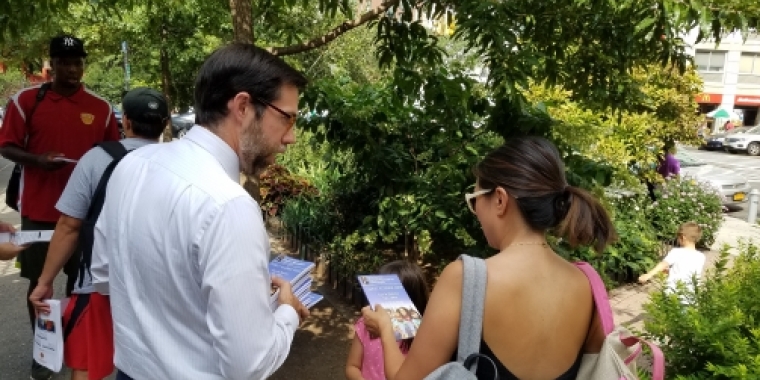
TESTIMONY OF STATE SENATOR DANIEL SQUADRON REGARDING NYC COUNCIL BILL 384-A
Daniel L. Squadron
January 29, 2015
Below and attached is Senator Squadron's testimony regarding Intro 384-A in the New York City Council.
My name is Daniel Squadron, and I represent the 26th District in the New York State Senate. My district includes the Manhattan neighborhoods of Tribeca, Battery Park City, the Lower East Side, Chinatown, the Financial District, Greenwich Village, Little Italy, SoHo and the East Village and the Brooklyn neighborhoods of Greenpoint, Williamsburg, Vinegar Hill, DUMBO, Fulton Ferry, Brooklyn Heights, Cobble Hill, and Carroll Gardens.
I would like to thank Parks Committee Chair Mark Levine for convening this hearing, and for the opportunity to testify on the ongoing issue of parks equity.
As I have said before, local parks in some of the wealthiest parts of the city are doing very well, which in many respects is to the great credit of parks conservancies. But that has meant that New Yorkers who live near these parks are not faced with the reality that the overall parks system has not received the care and funding it needs. As a result, the disinvestment in the parks system of the past years has not registered with many of those living in some of the most powerful parts of the city. Our marquee parks are doing better than ever, but we cannot let most parks fall behind while others thrive.
When we started the focus on parks equity nearly two years ago, it was clear that there was a limited understanding, and scant data, about the significant role conservancies play in our parks system. This bill would provide important information by requiring the Department of Parks & Recreation to gather regular information from conservancies that have contracts with the City on their total expenditures for maintenance and operation of their respective parks.
Beyond the obvious benefits of transparency, Intro 384-A would also force stakeholders to truly understand the costs, and stark realities of government disinvestment, of current park operation. The conservancies are playing an important part in maintaining these parks, and a reminder of the extent to which they have been forced to fill government funding gaps is important to understanding our parks equity crisis.
While this information will certainly identify some our system’s funding failures, it does not link individual conservancies to the larger system or provide funding to make up the gap for under-resourced parks. Significant public dissemination and discussion of the information is critical, so it serves the goal of allowing the public, elected officials, parks advocates, and the conservancies themselves, to understand the impact different conservancies have, identify who is doing more with less, and help point to the most efficient and effective ways to improve parks throughout the system -- those with conservancies and without.
However, this bill need not be passed for conservancies to play a more meaningful role in expanding the impact of the Mayor's Community Parks Initiative, which the conservancies have clearly communicated their enthusiasm to do. At the CPI announcement on October 7th last year the mayor was clear in his commitment to "turn to the major parks conservancies and ask them to make a contribution as part of this process.” I look forward to that voluntary role for large conservancies becoming a reality, and being fairly reflected in the data if the proposal before us becomes law.
I look forward to continuing to work with Mayor de Blasio, Commissioner Silver, Chair Levine, advocates, and the conservancies to ensure we have a unified, improving and vital parks system across the city. Intro. 384 and CPI are important first steps, and we must continue our commitment to do more.
Share this Article or Press Release
Newsroom
Go to NewsroomSquadron Shares Annual Parent Resource Guide With Students & Families
September 9, 2016

Squadron 2016-17 Parent Resource Guide
September 8, 2016


